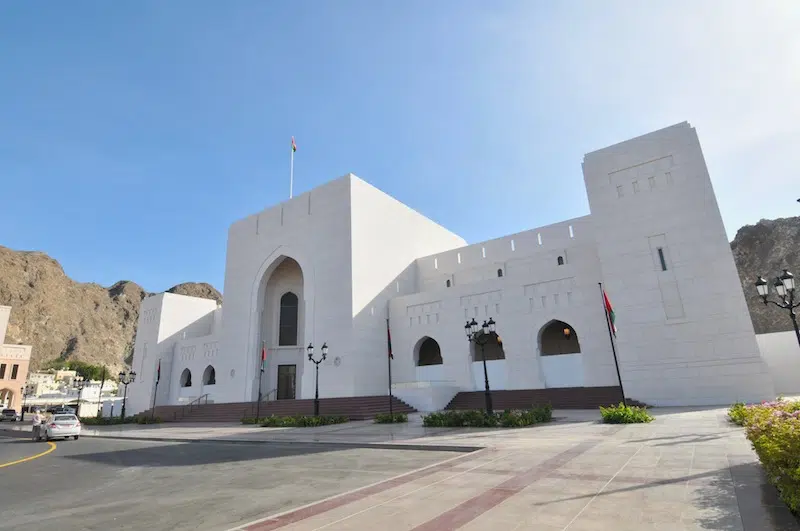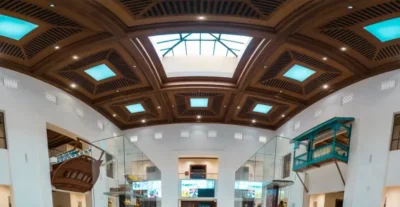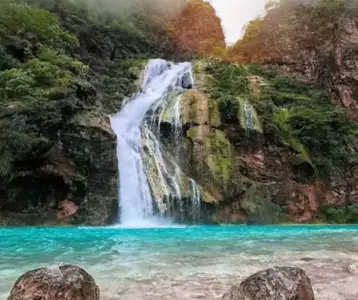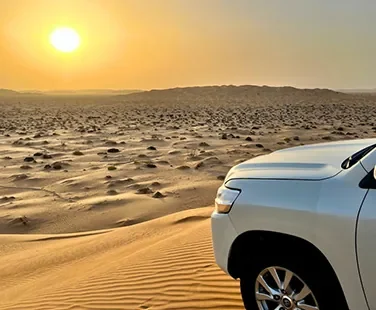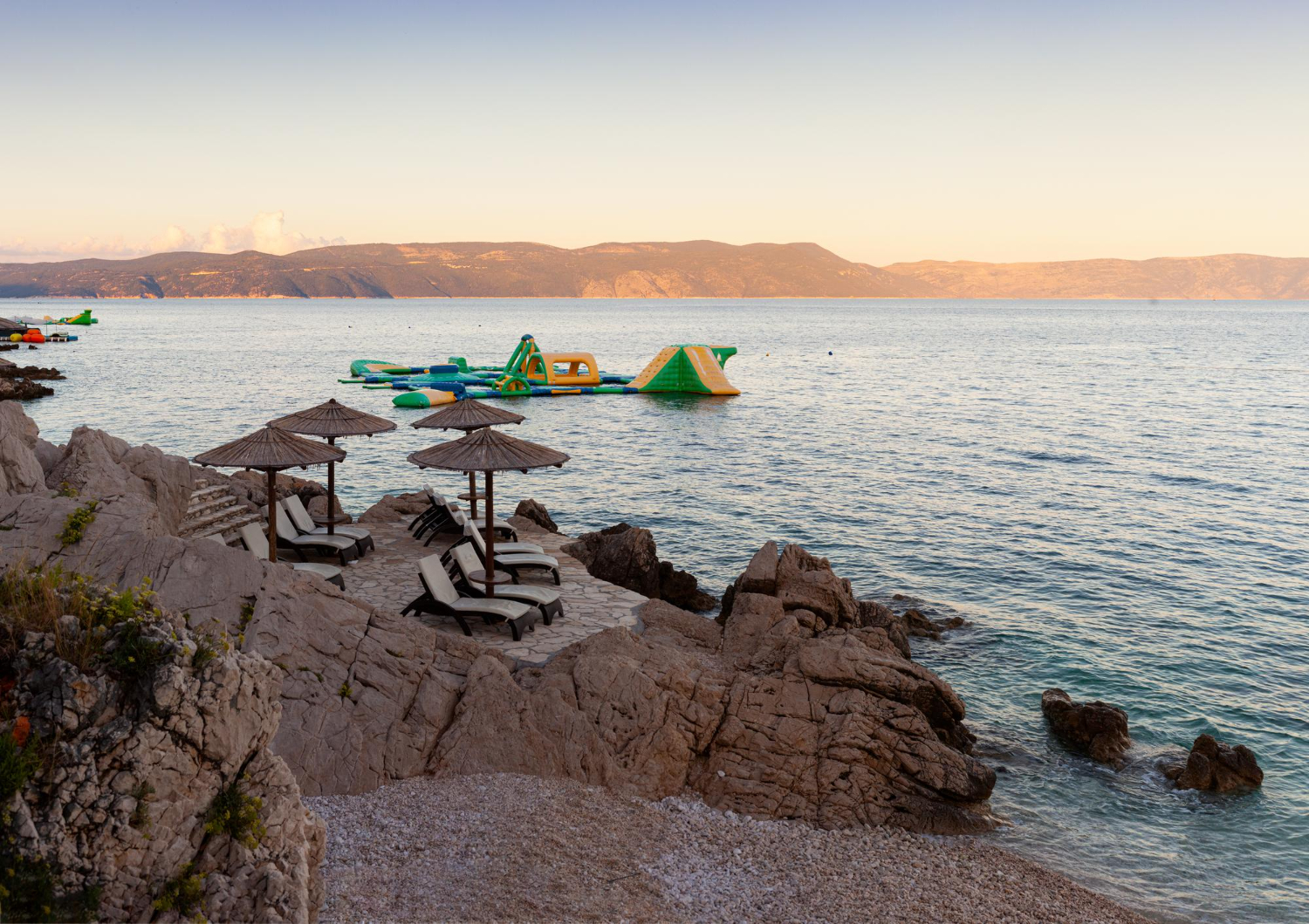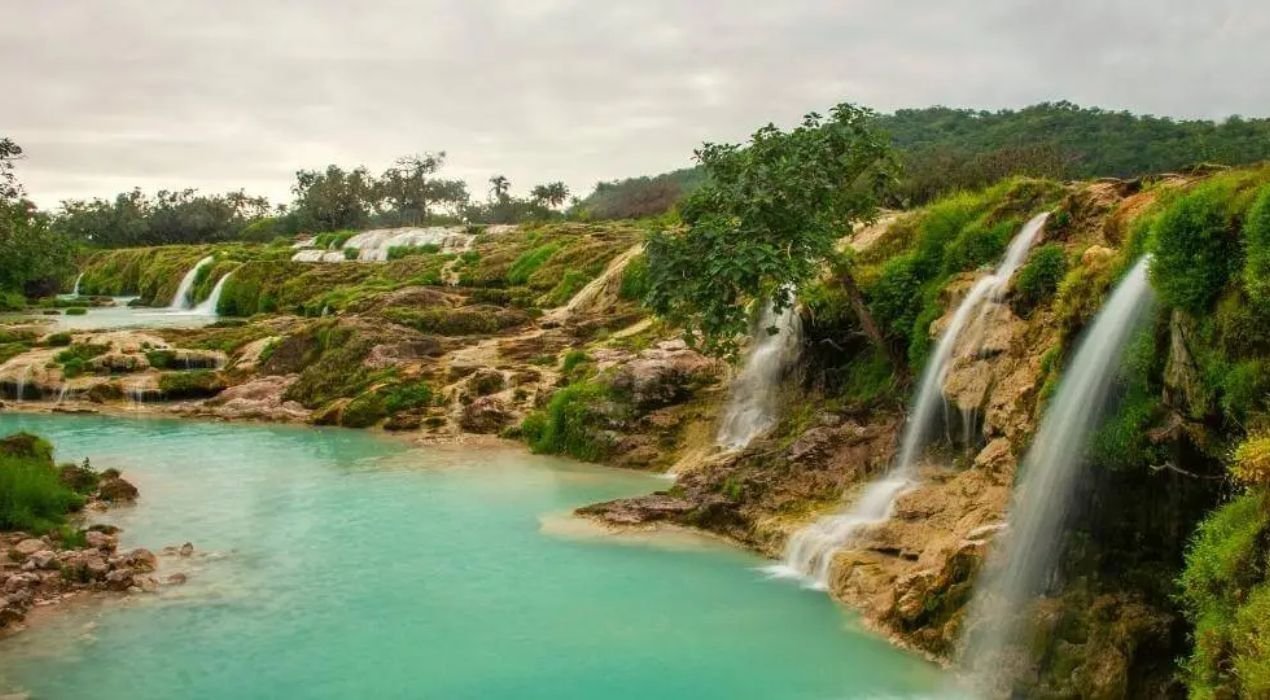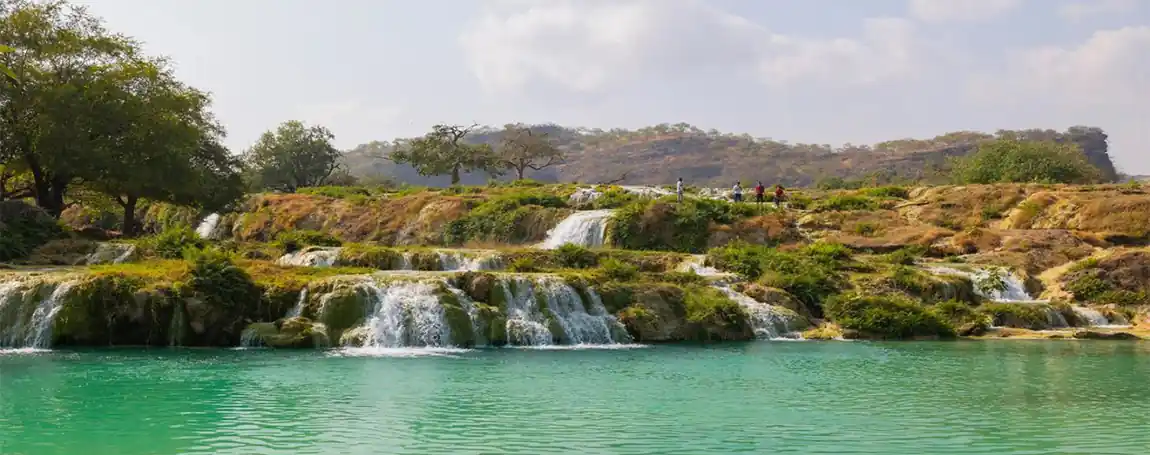Information About National Museum Muscat
The National Museum Muscat stands proudly in Muscat’s heart, showcasing over 7,000 years of the country’s rich cultural heritage. My first visit left me amazed by the incredible diversity of artifacts that weave Oman’s captivating story.
This detailed guide will direct you through this wealth of cultural history. The museum takes you back in time with its collection of ancient maritime artifacts and royal gifts that capture Omani civilization’s essence. You’ll find everything you need to know about this remarkable institution, whether you’re planning your first visit or just curious about its contents.
The following sections cover visitor details, highlight the most impressive exhibits, and provide practical tips to make your museum experience both memorable and enriching.

Essential Planning Information
Here’s everything you need to know before visiting this magnificent cultural institution. My multiple visits to the museum have given me insights that will help you plan your trip.
Location and Getting There
The National Museum of Oman stands proudly in Muscat’s Hillat an-Ni’am district on as-Sa’idyyah School Street. You’ll find it easily since it sits right across from the beautiful Qasr al-Alam Palace. The building itself covers 13,700 square meters. Its palace-like architecture blends perfectly with the surrounding area.
Opening Hours and Ticket Prices
The museum welcomes visitors throughout the week:
- Saturday to Thursday: 10:00 AM – 5:00 PM (last entry at 4:30 PM)
- Friday: 2:00 PM – 6:00 PM (last entry at 5:30 PM)
Here’s what you’ll need to pay for admission:
| Visitor Category | Price (OMR) | Requirements |
|---|---|---|
| Tourists | 5.000 | Valid ID & Credit Card |
| Residents | 2.000 | Resident Card Required |
| Citizens & GCC Nationals | 1.000 | ID Required |
Best Times to Visit and Photography Rules
The National Museum of Oman shines between October and March. These months bring pleasant temperatures from 15°C to 30°C (60°F to 85°F). October stands out as an ideal time because the weather starts cooling down.
The museum’s photography guidelines protect its precious artifacts and respect cultural sensitivities. Rules can change for different exhibitions and special displays, so it’s best to ask the staff about current policies when you arrive.
Weekday mornings offer a quieter atmosphere with fewer visitors. This gives you time to discover the museum’s collection of over 7,000 objects and 33 digital immersive experiences at your own pace.
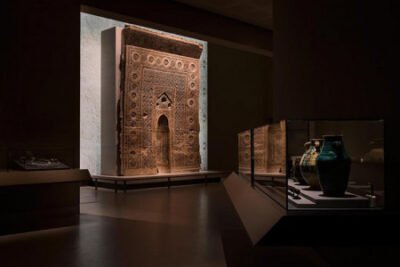
Museum Layout and Gallery Guide
The National Museum of Oman took my breath away the moment I walked through its doors. The space tells Oman’s story beautifully across 4,000 square meters of exhibition space. Let me share what I discovered during my visit.
Ground Floor Galleries Overview
A modern take on a traditional Omani courtyard greets visitors at the entrance. The Central Hall amazes everyone with its collection of ancient chests and the massive 14th-century Muscat Souq gates. You’ll find the Maritime History Gallery next door, where wooden floors complement seven detailed miniature Omani ships.
The Arms and Armor Gallery stands out with its unique circular design that matches the historic Al Hazm Fort tower. This space showcases traditional weapons and gunpowder artillery. The gallery also features an amphitheater that plays HD presentations about Oman’s military heritage.
Upper Floor Exhibition Spaces
A stunning helical staircase leads to the upper floor and doubles as a reverse timeline. Display cases line the stairs and show glimpses of different periods in Omani history. The upper level houses these main galleries:
| Gallery Name | Key Features |
|---|---|
| Prehistory and Ancient History | Houses 2-million-year-old stone flint |
| Splendors of Islam | 1400-year Islamic heritage collection |
| Oman and the World | Global trade and cultural exchange exhibits |
| Renaissance Gallery | Modern Oman’s transformation |
Interactive Zones and Special Exhibits
The museum shines through its focus on interactive learning. These features caught my attention:
- A three-meter interactive touchscreen in the Aflaj Gallery shows the ancient water management system
- The region’s first open-plan museum storage sits in the Collections Gallery
- 43 digital immersive experiences spread across the galleries
- A state-of-the-art UHD cinema plays cultural documentaries
Traditional displays blend perfectly with modern technology throughout the museum. The Intangible Heritage Gallery captivates visitors with multimedia presentations of Omani music and cultural traditions. The Collections Gallery breaks new ground as the Middle East’s first open-plan storage space, where you can watch museum conservation work happen right before your eyes.
Must-See Highlights
My recent visit to the National Museum of Oman revealed remarkable treasures that deserve attention. The museum’s collections left me amazed, and I want to share some incredible pieces that captivate every visitor.
The Land and People Gallery
This gallery perfectly captures Oman’s identity through its carefully selected exhibits. Local cultures shine through displays that show how geographic diversity shaped communities – from prosperous oasis towns to mountain settlements. The gallery’s presentation of traditional crafts shows their natural progression from everyday tools to artistic masterpieces. Stories of survival, identity, and religious expression come alive through intricate jewelry, ceremonial weapons, and traditional attire.
Maritime History Collection
The maritime section features some of the most impressive reconstructions anywhere. The Jewel of Muscat stands as its centerpiece – an incredible recreation of a 9th-century sewn-plank ship. This exhibit amazes visitors with its precise details, featuring over 37,000 holes and 120,000 stitches that match the original vessel’s construction.
Notable Maritime Exhibits:
- The Magan boat model, showing ancient reed-construction techniques
- The historic Sohar vessel reconstruction, which proved ancient trading routes to China
- The Badan Sayyad fishing boat, representing traditional Omani vessel craftsmanship
Royal Gifts and Cultural Treasures
The diplomatic treasures in this section create lasting impressions. These remarkable state gifts reflect Oman’s international relations:
| Gift | Origin | Historical Significance |
|---|---|---|
| Japanese Lacquered Chair | Empire of Japan | Presented in 1880, featuring pure gold powder decoration |
| Terrestrial Globe | France | Gift from President Mitterrand, marking personal and political landmarks |
| Apollo 17 Commemorative Plaque | USA | Contains actual lunar soil and Oman’s flag from the moon mission |
The collection’s Dollar Tankard stands out as a masterpiece of German silversmithing that tells Zanzibar-German relations’ story. Its intricate Arabic inscriptions blend beautifully with classical Greek mythological motifs.
Interactive Experiences
The National Museum of Oman amazes me with its technological marvels. My visits have shown this isn’t a traditional museum at all. It’s a time-traveling experience powered by advanced technology and interactive exhibits.
Digital Displays and Multimedia Shows
The museum stands out with its 43 digital immersive experiences. The Ultra High Definition cinema caught my attention. It shows “Oman the Jewel of the East in the Land of Hope” – a stunning documentary that sets up your museum experience perfectly. The theater uses state-of-the-art 4K technology and has an audio loop system that helps visitors with hearing disabilities.
Interactive Features Overview:
| Experience Type | Description |
|---|---|
| Touch Screens | Interactive maps learning Oman’s landscapes |
| Digital Panels | Stories of historical figures and events |
| Sensory Devices | Convey authentic aromas of Omani culture |
| Virtual Reality | Immersive historical experiences |
Hands-on Learning Activities
The Learning Center lets me watch visitors connect with Omani heritage. Carefully designed hands-on activities bring history to life here. Children and adults get absorbed in interactive games that teach everything from traditional navigation techniques to modern parliamentary processes.
The museum’s dedication to accessibility shows through:
- Braille descriptions in Arabic
- Tactile walls with historical narratives
- Interactive sound installations
- Digital database terminals for research
Special Programs and Events
I’ve had the chance to join various special programs that make the museum experience better. Through collaboration with the Smithsonian, the museum created groundbreaking educational initiatives and outreach programs. Museum professionals trained in Oman and Washington, D.C. design these programs to ensure world-class standards.
The museum showcases different aspects of Omani culture through temporary exhibitions. I went to a fascinating exhibition that showed historical photographs of Oman’s relationships with neighboring countries. These special events mix visual presentations, cultural performances, and interactive workshops to teach more about specific aspects of Omani heritage.
The sort of thing I love is how the museum uses technology to connect past and present. Visitors can learn about everything from ancient maritime routes to modern governmental systems through sophisticated linear media and interactive exhibits. Squint Opera created these over five years. Each digital experience tells a story that celebrates Oman’s rich traditions and modern achievements.
Visitor Amenities and Services
After spending time with the amazing exhibits and hands-on experiences, I want to tell you about the great amenities that make a trip to the National Museum of Oman even better. I’ve tried these services myself, and they really make the museum visit special.
Guided Tours and Audio Guides
The museum’s tour options are really complete. They fit different schedules and interests perfectly. Here’s what you can expect:
| Tour Type | Price (OMR) | Duration | Group Size |
|---|---|---|---|
| General Tours | 10 | 90 minutes | Up to 14 people |
| Private Custom Tours | 100 | 2 hours | 2-10 people |
| Back-of-House Tours | 20 | 2 hours | 2-6 people |
Private custom tours are my favorite because they include traditional Omani hospitality after regular hours. Tech-savvy visitors should try the virtual tour experience that works great on smartphones, tablets, and computers. The interactive map feature lets me move between galleries at my own pace.
Café and Gift Shop Options
The museum has two welcoming cafés that offer more than just drinks – they’re great spots to think about the exhibitions you’ve just seen. While they don’t serve full meals, they have nice snacks, hot beverages, and authentic Omani coffee.
The gift shop has become one of my favorite places. Its exclusive collection of customized merchandise made specifically for the National Museum makes it special. A unique souvenir from here is a great way to take Omani heritage home with you. Here’s a tip: Keep your museum ticket with you – it gives you a 20% discount at the attached restaurant!
Accessibility Features
The National Museum of Oman stands out among Middle Eastern cultural institutions for its accessibility. These features caught my attention:
- First museum in the Middle East to incorporate Arabic Braille script
- Fully equipped Learning Center with special needs accommodations
- Accessible lifts near the main entrance and throughout the building
- Dedicated prayer rooms for both men and women
- Convenient childcare room on the ground floor
- State-of-the-art facilities designed to International Council of Museums Standards
The museum’s dedication to inclusive design really stands out. The infrastructure works great for visitors with reduced mobility. These features blend naturally into the museum’s architecture and overall experience.
Families with children will love the discovery areas made just for young visitors. These spaces go together perfectly with the main exhibitions, making the museum a great place for all ages and abilities.
Conclusion
The National Museum of Oman proves its nation’s rich heritage by blending traditional exhibits with modern technology. My visits revealed this cultural institution’s true nature beyond a typical museum. Visitors can enjoy a complete experience of Omani civilization that adapts to their individual needs.
Thoughtful design elements make this museum a key destination for Middle Eastern history and culture enthusiasts. Ancient artifacts combine with digital experiences and educational programs to bring Oman’s 7,000-year legacy alive. The museum’s interactive galleries and accessibility features enhance every visit significantly.
The maritime collection, royal gifts, and hands-on activities at the Learning Center help visitors understand Oman’s cultural importance deeply. The best time to visit is during weekday mornings when you can experience this cultural treasure at your own pace. The museum shop offers meaningful mementos of your time-traveling experience.

